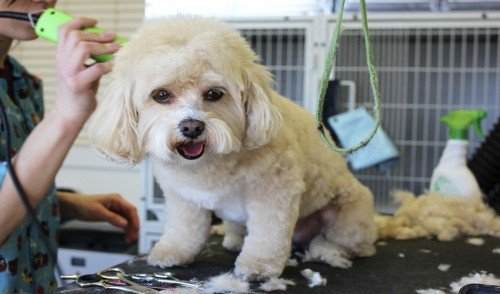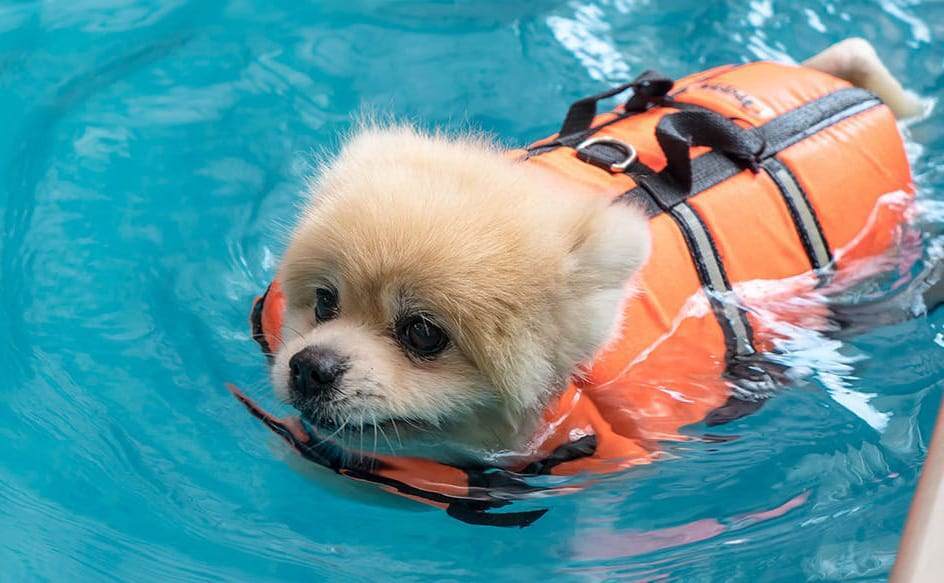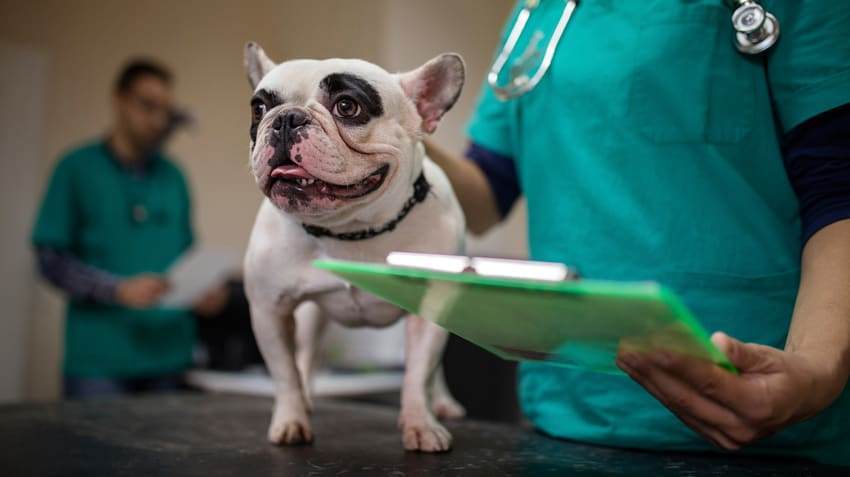In the summer season, the dog should have easy access to water and his resting place should have a shade from sunlight. Don’t leave the dog alone in the car and monitor while he is taking a bath in the swimming pool.
Excessive heat can make us uncomfortable; dogs aren’t left out either. Though you can grab a cup of your favorite cold drink or move to an air-conditioned room or shade, your dog might not have access to these privileges thus you have to make efforts to make sure your dog is safe in the summer.
Pets love summer as we do, but the risk of overheating poses many dangers to them, they can eat the wrong foods, drink contaminated water, suffer sunburns or at the worse drown in the pool as they try getting cool.
Summer is the perfect season for picnics, outings, hikes, swimming and other fun activities. Though dogs sweat, they cool themselves through panting. In conditions where there’s is only hot air available for the dog, panting can’t help much; thus, there is a need to know how to keep your pet cool and safe in this season.
For winter tips and especially taking care of dog paws in winter, check this article on Protecting Dog Paws in Winter.
Consider these tips as the best way to overcome summer challenges for your pet.
1. Avoid shaving your dog
Most people shave their dogs in summer to help them overcome heat stress. But do you know that the primary way in which dogs cool is by panting? Additionally, dogs sweat via the pads of their paws to cool their bodies.
The dog’s fur helps them keep warm in the cold season, but it also keeps them insulated in summer. Thus by shaving your dog, you’re indeed interfering with their natural way of coping with the excess heat.
Though it isn’t advisable to shave your pet in summer, you can trim their fur. Grooming your pet should be practiced at all seasons. As you trim the fur, make sure you leave at least an inch of hair on the skin to protect the dog form sunburns. For perfect dog grooming write-up, do read Dog Grooming Tips for Paws, Eyes, Ears, Fur, Bath and Teeth

2. Avoid foods and drinks offered in restaurants
Since summer is cramped with lots of fun activities, you’ll visit many outlets and places with your dog. Be on the watch out to keep your dog from foods and drinks offered in these places. Most of these foods and beverages are poisonous to your dog.
Since your dog is already under stress due to excess heat, don’t allow them to feast on toxic substances. Avoid feeding grapes, onions, chocolate, raisins, and products with the artificial sweetener xylitol. Such foods and drinks can leave your pet with severe abdominal ailments.
3. Provide adequate fresh water
Your dog will lose lots of water during the summer. To cushion the dog from dehydration, make sure the dog has access to plenty of clean cold drinking water both day and night.
You can make use of cheap collapsible containers to provide water to the dog. If you plan to be out for long, you can opt to carry ice cubes or freeze a bottle or two of water to make sure the dog has cool water all day long.
4. Consider using sunscreen for light-coated dogs
Just like humans, dogs are affected by UV exposure. To counter this problem, consider applying sunscreen to your light-colored dog. Shop for sunscreens made purposely for dogs to apply on their exposed skin.
Areas around the face need protection from the UV rays. If your dog has blond or white furs, know it’s nearly translucent and may require sunscreen protection.
5. Plan strenuous exercise at cool times of the day
Consider scheduling demanding activities in the cool hours of the day, such as early morning or evening. For example, if you wish to take a walk with your dog, do it in the late evening or early morning.
Dogs find it challenging to acclimatize in hot weather; your dog will be panting excessively when exercising in the hot sun. Strenuous activities place a strain on the dog, and they have to balance between exercise and conditioning their bodies.
6. Never assume your dog is an excellent swimmer
During summer, your dog can drown in the pools as they try to cool their bodies in the water. If you are in an area where there is a pool, never leave your dog unsupervised. Make sure you’ve trained your dog on how to swim before you let them swim on their own.
Also, make sure they wear floating devices when you take a boat ride. After swimming, rinse the dog with clean, fresh water to remove chlorine and other chemicals found in the pool; these chemicals are harmful to the pets.
Additionally, if your dog swims in rivers, streams or lakes rinse then since the water contains dirt and bacteria that can harm the dog.

7. Check for signs of overheating
If you know the symptoms of overheating, you’re better placed to offer help to your dog. Common signs of overheating include excessive panting, increased heart rate, stupor, breathing difficulties, seizures, vomiting, dizziness, and weakness.
If you note any of these signs, please take the necessary precaution such as providing fresh cool water or moving the dog to a shade.
8. Avoid leaving the dog in the car
In just a few minutes, your dog can suffer heatstroke and suffocate in the car. Though most people know it’s dangerous to leave their kids in the car in, some leave their pets locked in the car without access to fresh air.
It’s essential to know that the more a car is left stationary, the more it gets hotter. If you can’t walk with your dog, it’s better to leave them at home on a hot day.
Leaving your dog in the vehicle may not be a big deal, but if it exceeds 10 minutes, heatstroke may strike.
Additionally, it’s essential to be aware of your state laws. Sixteen states in the US have “hot air” laws. If police are notified that you’ve left your pet in the car, you risk immediate arrest. Thus you have the choice to leave the dog at home or walk with them always.
9. Provide shade
When your dog is left outdoors, make sure they have adequate shade. Note that trees provide better shade and fresh air those doghouses. The doghouses can trap air and make the conditions worse for the dog.
10. Walk-in away from the sun
When strolling with your dog, make use of shaded pavements if available. Streets and sidewalks can become extremely hot especially if they have been made using concrete or any other material that absorbs heat, they can be as hot as 145°, and this temperature is adequate to cause sunburns to your dog.
11. Check their weight
The winter conditions will leave your dog overweight if you’re not careful. Since summer is the ideal time for exercise, make sure your dog has lots of exercises to shed those excess calories.
If your dog is physically fit, they’ll have less trouble with the summer heat. Besides, if the dog has an ideal weight they are likely to live longer. If you have doubts about your dog’s weight, you can consult your vet.
12 Visit your vet regularly
Some infections, such as parvovirus spread in summer. It is therefore essential to make sure your dog has the right jabs in time to prevent them from diseases. Additionally, your vet will examine them to find out if they have any conditions that need attention.
In this season, your dog might also be at risk of contracting rabies. During summer, most pests and parasites that spread disease in pets such as mosquitoes and fleas are widespread. Get advice from your vet on how to deal with these parasites and pests.
Remember in summer these parasites are all over; these are vectors that will transmit heartworms, tapeworms, and diseases such as Bartonella and Lyme. If you think your pet is infected, ask for the appropriate medication from your vet.

13. Avoid events that involve firework displays
Since summer is the perfect time for fun activities such as picnics, hike, retreats, and barbecues, most of these celebrations feature fireworks. Pets are terrified by the sound of fireworks. If your dog has fireworks phobia then do check my article on calm your dog during fireworks and thunder.
Besides, the fireworks are made of potassium nitrate a chemical that can harm your dog if ingested.
If you know you’ll attend events with fireworks; it’s essential to leave your dog at home. If the fireworks display is at your home, keep the pet indoors and clear of any debris that will remain after the exercise.
14. Keep your dog cool
It’s interesting to know that pets heat bottom-up. When out in the sun, try by all means to keep your dog from hot surfaces. Surfaces like asphalt and cement should be no go zones for your pet. These surfaces may burn the dog paws besides increasing their body temperature.
If you’re driving truck never leave your dog at the back since the hot metal will burn their paws. When you can’t avoid the hot sun, spray cold water on the dog’s stomach and paws to enable it to cool faster.
If you decide to use a wet cloth to cool the dog’s body, massage the paws and the stomach. You may also use doggy boots to protect your dog’s paws.
Learn More With the Help of Video
Conclusion
This list provides adequate tips that will assist you to keep your dog safe in the summer. The game is on your side; implement these tested strategies, and let your dog enjoy summer just like you.
References
Table of Contents